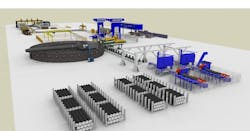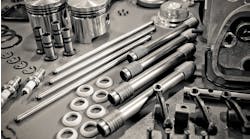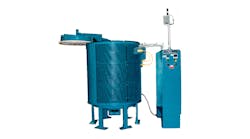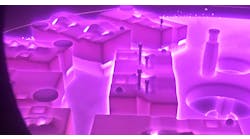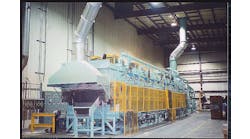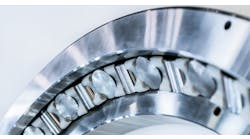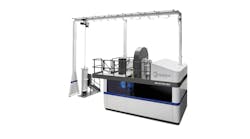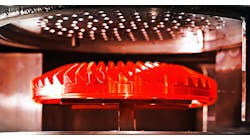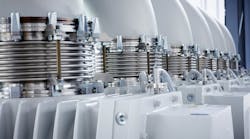The pursuit of manufactured parts and systems that are lighter and/or stronger has been a boon to engineers working to optimize designs, and to metallurgists working to refine the materials selected for parts and products used in transportation, medical science, energy exploration and transmission, and construction. One of the less-examined aspects of this wide trend is the new emphasis on vacuum technology — to produce cleaner or more specialized metal-alloy materials, or to enhance the mechanical structure or performance of a part, or to extend its service life. It’s all about the vacuum processes.
Vacuum processes are in greater demand, so practical understanding and experience with industrial vacuum technology is in greater demand. Now, Leybold, has developed two online tools to assist manufacturers as they develop expertise in industrial vacuum technology, specifically in planning vacuum-processing systems and selecting vacuum pumps for particular operations. The Pump Finder and the calculation tool LeyCalc allow manufacturers to select and build their vacuum process operations.
Leybold develops vacuum systems for use in manufacturing and analytical processes, as well as in research. Its core capabilities are developing application- and customer-specific systems for creating vacuums and extracting process gases.
The Pump Finder function allows a user to navigate through the available pump units in a step-by-step fashion using selector options — setting desired values for chamber size, target pressure, and pipe dimensions — to identify an optimal pump unit.
There are two calculation options for modelling different vacuum applications: process flow and vacuum chamber pump down. A process-gas flow is a continuous gas flow where constant pressure is conveyed. A vacuum-chamber pump down is an application where the chamber is pumped/evacuated to a specific target pressure.
For the manufacturer, the result will be a selection of vacuum pumps that meet the specific process requirements.
The LeyCalc tool can be used for detailed engineering of vacuum systems, drawing on the same algorithms used by Leybold’s experts. It allows customers to calculate their vacuum systems fully independently; for complex scenarios the experts will offer advice.
“Previously, we had to adjust parameters such as chamber size, process gases, cycle times, pipe length, and pressure values during the initial contact with the customer,” recalled Dr. Tom Kammermeier, global application manager, Industrial Vacuum. “With the help of the simulation software, the user can independently calculate configurations and get an initial idea of the vacuum performance.
“In the past, there were often lengthy dialogues about such details,” Kammermeier continued. Now, users can perform their calculations independently, so that the entire process leads to a more targeted and faster selection of the right solutions for the application. “We expect LeyCalc to improve the contact quality with our customers,” he said.
Once a pump’s chamber and target pressure are defined, LeyCalc will calculate a pump-down curve: The result is immediately displayed in a diagram, revealing exactly how long it will take to pump air out of the chamber to a defined pressure and how the pressure develops over time. Alternatively, the user can calculate the pumping-speed curve of a pump system. This will show which pumping speed is provided at a certain pressure.
All calculation data is archived and can be recalled at any time, from any device by who registered customers.
Calculation results also can be shared with specialists at Leybold, allowing detailed discussions about a vacuum application. Overall, LeyCalc will make customer communication more efficient and solutions for complex projects faster.
“In addition to the chambers and pumps of a vacuum system, the different influences of pipelines also are taken into account. These include the conductance effects in all pressure ranges and flow regimes, blocking and, of course, the volume of the lines,” explained Hannes Kamecke, the IT manager responsible for the online configurator. In some cases, it will be apparent that a pump with higher individual performance would not improve the overall vacuum performance because the reductions are caused by an incorrectly dimensioned pipeline. “However, the diagram immediately shows that the pipe diameter needs to be increased,” Kamecke said.
Navigating through the web-based program is possible on tablets and smartphones. Details that may call for more explanation are linked to more detailed information on vacuum technique. In the future, LeyCalc will incorporate the whole Leybold product portfolio, including high-vacuum applications.


